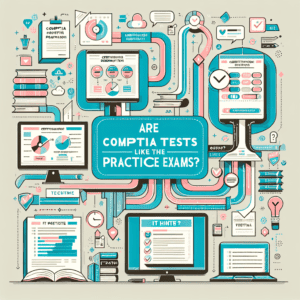If you’d rather listen to this blog post, below is a podcast summarizing the differences between the A+ 220-1201 & 220-1101 Exam Objectives:
Comparing the A+ 220-1201 objectives to the domains of the previous CompTIA A+ Core 1 (220-1101) exam, we can observe some shifts in emphasis:
- Networking has increased from 20% in the 220-1101 to 23% in the 220-1201.
- Mobile Devices have decreased from 15% in the 220-1101 to 13% in the 220-1201.
- Hardware and Network Troubleshooting has slightly decreased from 29% in the 220-1101 to 28% in the 220-1201.
- Hardware (25%) and Virtualization and Cloud Computing (11%) remain the same in both versions.
Notably, the 220-1201 exam objectives document explicitly mentions the troubleshooting methodology as an important best practice but clarifies that it will not be formally tested as a separate objective. However, troubleshooting skills within the context of the job role remain emphasized in the “Hardware and Network Troubleshooting” domain. The 220-1101 objectives also include troubleshooting within their domains, particularly in “Hardware and Network Troubleshooting,” but they do not make the same explicit statement about the methodology not being directly tested.

Increased Focus on Networking
These changes suggest an increased focus on networking concepts in the updated exam, along with a slight decrease in the emphasis on mobile devices, hardware, and network troubleshooting as a percentage of the overall exam. While the troubleshooting methodology itself is not directly tested in the 220-1201, the ability to apply troubleshooting skills in various scenarios remains a crucial competency assessed in the exam.
Domain by Domain: What the A+ 220-1201 Objectives Focus On
The CompTIA A+ Core 1 (220-1201) exam measures knowledge and skills across five domains, each with a specific weighting that contributes to the overall score. These domains are:
1.0 Mobile Devices (13%)
This domain focuses on monitoring mobile device hardware, using appropriate replacement techniques, and comparing and contrasting accessories and connectivity options. It also covers configuring basic mobile device network connectivity and providing application support, including wireless/cellular data networks, Bluetooth, location services, and mobile device management.
2.0 Networking (23%)
This domain assesses the understanding of networking fundamentals. It includes comparing and contrasting TCP and UDP ports and protocols, explaining wireless networking technologies including frequencies and 802.11 standards, summarizing services provided by networked hosts such as server roles and IoT devices, explaining common network configuration concepts like DNS and DHCP7, comparing and contrasting common networking hardware devices, configuring basic wired/wireless SOHO networks, comparing internet connection and network types, and explaining networking tool.
3.0 Hardware (25%)
This domain covers various hardware components and their functions. It includes comparing and contrasting display components and attributes, summarizing basic cable types and connectors, comparing and contrasting RAM characteristics and storage devices, installing and configuring motherboards, CPUs, and add-on cards, installing appropriate power supplies, deploying and configuring multifunction devices/printers and their settings, performing appropriate printer maintenance, and explaining virtualization concepts.
4.0 Virtualization and Cloud Computing (11%)
This domain evaluates the understanding of virtualization and cloud concepts. It includes summarizing cloud computing concepts such as cloud models and characteristics, as well as aspects of client-side virtualization, including the purpose and requirements of virtual machines, desktop virtualization, containers, and hypervisors.
5.0 Hardware and Network Troubleshooting (28%)
This domain focuses on the ability to identify, troubleshoot, and resolve hardware and network-related issues. It includes troubleshooting motherboards, RAM, CPUs, and power20, drive and RAID issues, video, projector, and display issues, common mobile device issues22, network issues23, and printer issues.


